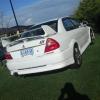How much can R33 stock fuel pump push (in kw)
Announcements
-
Similar Content
-
Latest Posts
-
By hoodedreeper · Posted
I see your point, I didn't think too deep into it, was purely focused on the price. There's no bad blood between myself and GSM, they acknowledged the price was cheaper else where and at the time couldn't match it. -
Interesting a broken coolant temp sensor stopped it starting! I left mine unplugged years ago on an R33 S1. Started fine, just idled unhappy once warm
-
You know what, I am enjoying your updates, but I have to say it is pretty poor form to walk into a shop that is paying for space and stock on the floor, try all their seats to work out what you are happy with, then buy somewhere else. If everyone did that the shop will be out of business with no opportunity for anyone to try a seat before buying. 👎
-
Good work, and thanks for posting up your solution for future people!
-
Yeah mate that’s the plan, I just want something I can have fun in and work on during weekends. There’s really only 1 road fit to drive the car on and luckily is been redone recently. I do want to tune it next year sometime, no dynos here so I’m looking at an ECU that can be remote tuned.
-








Recommended Posts
Create an account or sign in to comment
You need to be a member in order to leave a comment
Create an account
Sign up for a new account in our community. It's easy!
Register a new accountSign in
Already have an account? Sign in here.
Sign In Now